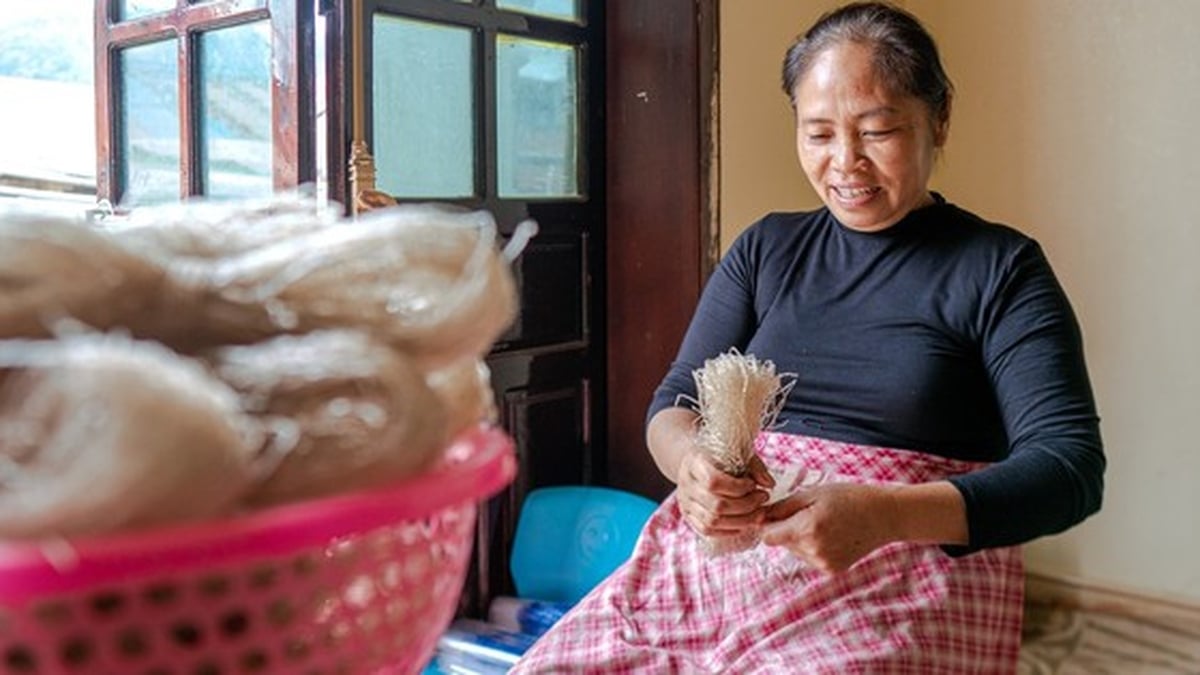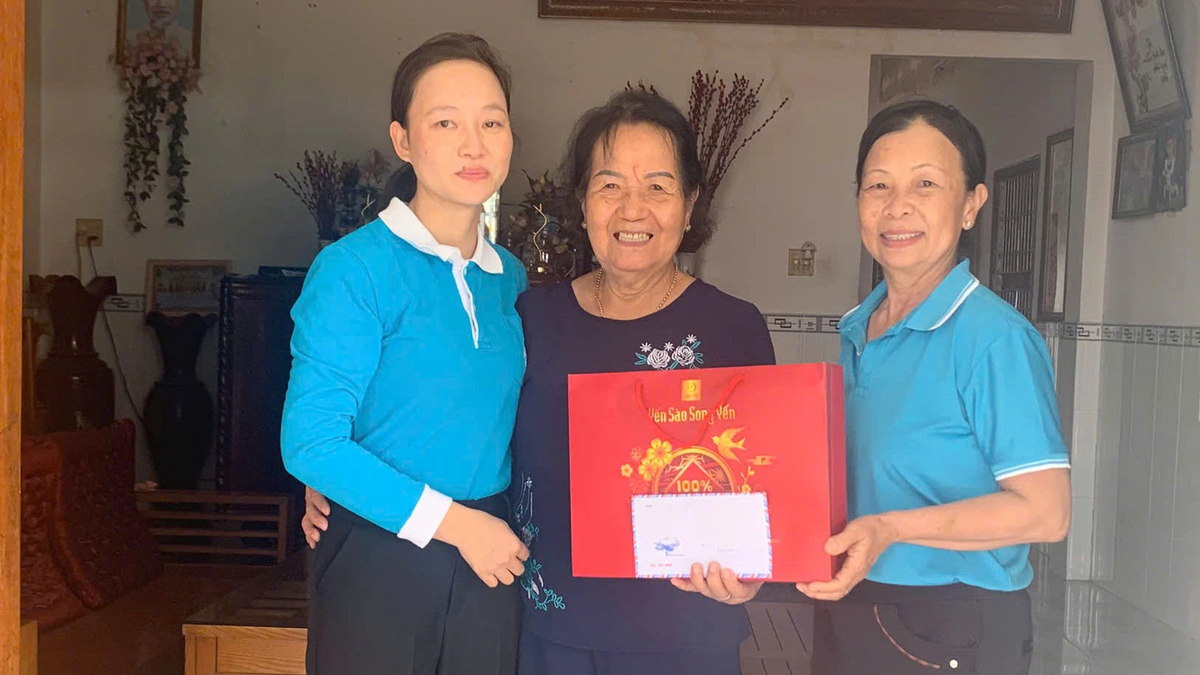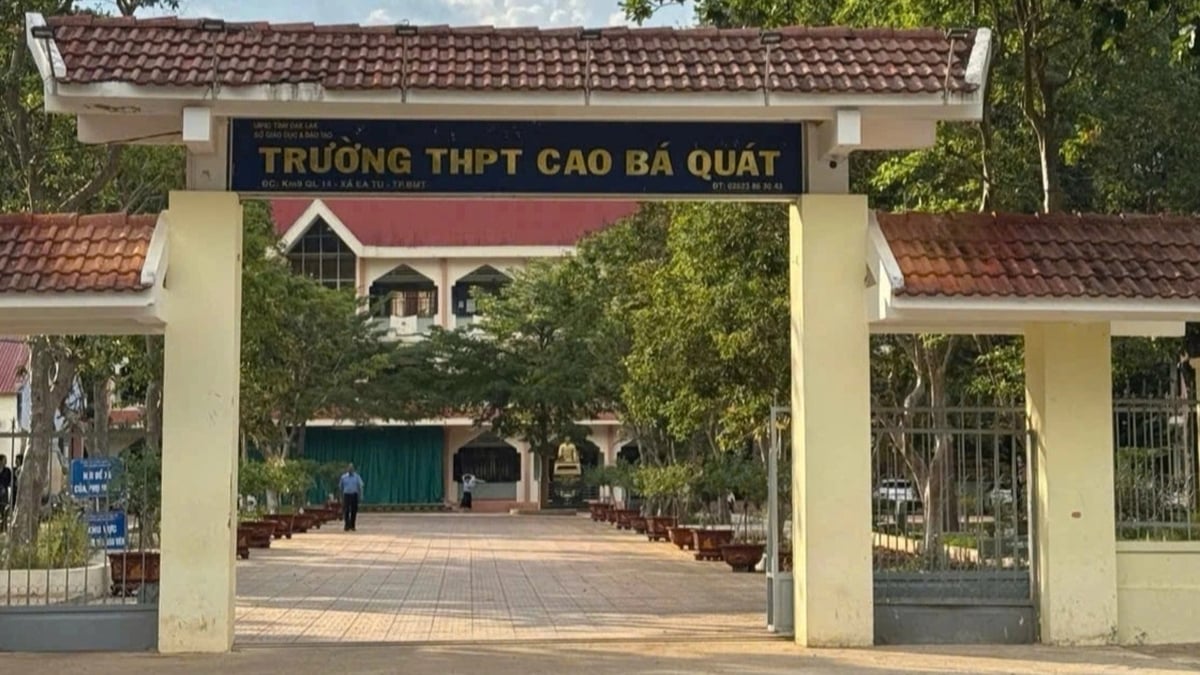The book Dictionary of Southern Administrative Place Names (Nguyen Dinh Tu, National Political Publishing House, 2008) has an entry for Triem Hoa (page 1232), which is "A commune of Quang Hoa district, Tay Ninh ward, Gia Dinh province since the first year of Thieu Tri (1841). In the fifth year of Thieu Tri (1845), the Tay Ninh Governor Cao Huu Duc gathered the scattered people to establish Hoa Binh village.
During the reign of Tu Duc, there were 7 villages: Cam Giang, Hiep Thanh, Hung My, Hoa Binh, Phuoc Trach, Thanh Duc, Truong Hoa... During the French colonial period, they were placed under the jurisdiction of Quang Hoa, then Trang Bang, then Tay Ninh . On March 6, 1891, Hoa Binh was dissolved and merged into Truong Hoa village, Hung My commune into Cam Giang commune...".
Interior of Trung Cam Giang communal house.
The above documents show that, although Tay Ninh prefecture was established in July (lunar calendar) 1836, it took a transitional period of 5 years for the subordinate villages to be officially defined and formed. And then during the French colonial period, there were adjustments. That was merging Hoa Binh village into Truong Hoa village, merging Hung My village into Cam Giang village. This explains why both Truong Hoa and Cam Giang communes currently have 2 communal houses.
In Truong Hoa, there are Truong Dong communal house (now in Truong Dong commune) and Truong Tay communal house (now in Truong Tay commune), both in Hoa Thanh town. In Cam Giang commune (now in Go Dau district), there are also two communal houses: Trung communal house in Cam Long hamlet and Cam An or Hung My communal house in Cam An hamlet. So, in just about 50 years of existence, Hung My and Hoa Binh villages have promptly built their own communal house to worship Thanh Hoang Bon Canh - the god who governs the land and protects the villagers according to Vietnamese folk beliefs.
It should also be mentioned that before 1975, Truong Dong and Truong Tay communes of Hoa Thanh town belonged to Truong Hoa village of Triem Hoa commune. And we have also searched through the ancient parallel sentences of the communal house to prove that Truong Dong communal house is the Trung communal house of Truong Hoa village in the past. Truong Tay communal house could be the communal house of Hoa Binh village, which was dissolved in 1891. Let's look at the entry for Truong Hoa in the same source (page 1242). That is "A village belonging to Triem Hoa district, Quang Hoa district, Tay Ninh ward, Gia Dinh province, Minh Mang dynasty. Through the Thieu Tri and Tu Duc dynasties until the beginning of the French rule, it was still part of the old canton, placed under the Quang Hoa district, then Trang Bang, then Tay Ninh. From January 5, 1876, it was called a village belonging to the Tay Ninh district. On March 6, 1891, it was merged with Hoa Binh district and dissolved... After April 30, 1975, it belonged to Phu Khuong district, Tay Ninh province. On March 14, 1979, it belonged to Hoa Thanh district in the same province. On April 4, 1979, the land was separated to establish 2 communes, Truong Dong and Truong Tay...".
At this point, we need to stop to compare with what was written in the article “The historical story of Truong Tay communal house” (book Historical - Cultural - Scenic Relics of Tay Ninh province, Department of Culture, Sports and Tourism, 2014). This book wrote: “Truong Tay area was established in the context of 1862 (Tu Duc 16th year) when the French colonialists forced the Hue court to sign the Nham Thin treaty (June 5, 1862) to cede 3 provinces in the Eastern region of Nam Ky to them… Those who did not cooperate with the French went to find new land to live, including Mr. Tran Van Dien (according to legend, originally from Gia Dinh) and his family went upstream of the Vam Co Dong river to the Truong Tay area today to reclaim land and settle down. With his diligence and hard work, he created a prosperous village, with increasingly prosperous residents…”.
I would like to tell the authors of the above books that: in all the documents written about Tay Ninh, there has never been a "Truong Tay region"; there has never been a "prosperous Truong Tay village". Especially since it was "established in the context of 1862". Because at that time, this land belonged to Truong Hoa village since the year King Minh Mang established Tay Ninh prefecture (1836). Moreover, in 1862, the French army was still busy dealing with the militia forces that disobeyed the court's treaty and organized to fight the French everywhere; so how could there be a story of you asking to open up land to establish new villages? This is impossible! Writing like that is also denying the merits of countless predecessors who opened up land to establish villages in the first half of the 19th century, several decades before 1862 (1836).
Let's return to Triem Hoa commune - one of the first communes of Quang Hoa district, newly established in 1836. We already know about Giai Hoa commune on the right bank of the Vam Co Dong river. The left bank of the river, in the most central area of the South Tay Ninh region, is Triem Hoa commune. Before there were 7, then there were 5 villages (hamlets) following each other along the river. From North to South, they are: Truong Hoa, Cam Giang, Thanh Duc, Hiep Thanh and Phuoc Trach. To the North, Truong Hoa borders Long Thanh village of Hoa Ninh commune. To the South, Phuoc Trach borders Thanh Phuoc village of My Ninh commune (now Go Dau town, Phuoc Thanh and Thanh Phuoc communes).
Cam An Communal House, Cam Giang.
This is the area with the earliest villages in the entire province. As researcher Nguyen Dinh Tu wrote in the article Tay Ninh past and present, Xua Nay Magazine No. 96, 2001. That, right from: "In the 10th month of winter of the year Ky Hoi (1779), after restoring Gia Dinh land, Lord Nguyen Anh rearranged the administrative and defense areas, established Quang Phong Dao in the area of Tay Ninh province today, under the authority of Phien Tran Palace.
The religious office was located in Cam Giang. Some villages were also established such as Cam Giang Tay village, Thanh Duc village, Thanh Phuoc village, Binh Phu village, Binh Tinh village (now An Tinh commune)... That was the first administrative organization located here".
Among the first villages in Tay Ninh, there were 2 villages: Cam Giang and Thanh Duc, which later belonged to Triem Hoa commune (1841). These were the core villages of a region, which later developed into the most prosperous countryside of Tay Ninh province during the feudal period.
The main nucleus was Cam Giang village, later a commune of Go Dau district. Because Cam Giang was chosen as the "dao" of Quang Phong religion. However, because it was only a "dao", in those first years, these villages and communes were all under the administrative management of Binh Cach commune, Thuan An district, Tan Binh prefecture, and Phien An town.
Some of the original village names have been lost, such as Binh Phu, Cam Giang Tay, whose whereabouts are unknown today; some places have changed their names, such as Binh Tinh to An Tinh. But if we count the villages of Triem Hoa commune that existed since 1841, most of them still have their names. Only the name of Hoa Binh village has been lost, while Hung My no longer has a village but its name is still preserved in a communal house named Hung My. This land still has many Vietnamese cultural sediments throughout its 245-year history (1779-2024).
In an ancient folk song: "Tay Ninh has Dien Ba mountain/ Has Vam Co river, has Cao Son tower" mentioned 3 scenic spots in Tay Ninh. "Cao Son tower" is Cao Son hill in Phuoc Trach village, in the old Triem Hoa commune.
Tran Vu
(to be continued)
Abbreviations in the article: hat tht - inspector; hat thb - inspector; l - village; t - canton; h - district; p - prefecture and t - province.
Source



































































































Comment (0)